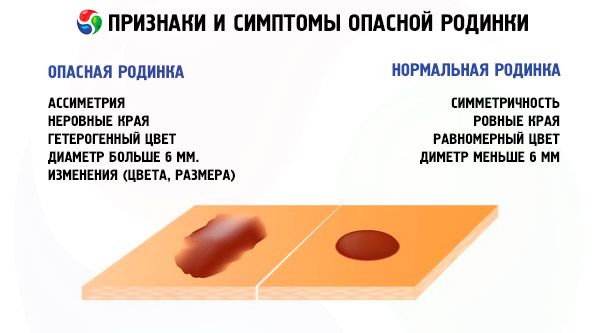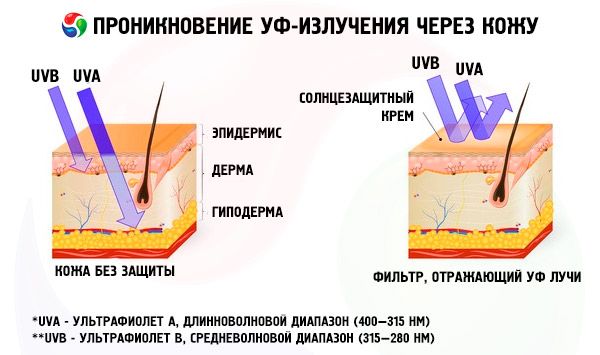Medical expert of the article
New publications
Sun moles: is "sun love" dangerous?
Last reviewed: 04.07.2025

All iLive content is medically reviewed or fact checked to ensure as much factual accuracy as possible.
We have strict sourcing guidelines and only link to reputable media sites, academic research institutions and, whenever possible, medically peer reviewed studies. Note that the numbers in parentheses ([1], [2], etc.) are clickable links to these studies.
If you feel that any of our content is inaccurate, out-of-date, or otherwise questionable, please select it and press Ctrl + Enter.
People have always had a dual attitude towards moles on their bodies. On the one hand, neat, cute pigment spots are a unique decoration peculiar to a particular individual. But on the other hand, this is a reason for reflection, and sometimes even concern. Moles appear at different periods of a person’s life. They can have different forms and manifestations, as well as different reasons for their appearance. These can be hereditary factors, injuries, hormonal surges. Among the variety of pigment spots, moles from the sun stand out in particular, as they appear without our participation.
Causes sun moles
In order to understand why moles appear from the sun, basic knowledge of biology and chemistry is necessary. Many have probably noticed that in the summer, after prolonged exposure to the sun or after visiting a solarium, the number of pigment spots increases. Under the influence of sunlight (UV radiation), the human body produces a special substance, melanin, which is the basis for the appearance and growth of moles.
The appearance of moles on the human body in itself does not pose any danger to human life and health.
Symptoms sun moles
Safe moles from the sun (pigment nevi) are small round spots, colored brown, more or less saturated depending on the depth of the nevus cells. Sometimes they stand out slightly above the skin surface, but their visible structure should not differ from the surrounding skin. Uniform coloring, as well as hair growth in the place where the mole appears, once again indicate its safety. Any change in the appearance, shape, color, size of a familiar mole should definitely alert its owner.
It is necessary to pay attention to the following aspects of the appearance and existence of moles, which can serve as a signal of distress.
- The appearance of new nevi in adulthood (usually moles appear before the age of 25)
- Large moles with a diameter of 1 cm.
- Enlargement or reduction of a mole.
- Change in color intensity, erasure of skin pattern.
- Unpleasant sensation in the area of the mole
- The appearance of foci of inflammation or bleeding.
- Noticeable compaction of a mole
- An unusually smooth, glossy surface of a mole
- Asymmetrical, irregular shape of nevus.
- Peeling, crusting in the area of the birthmark.
- The appearance of a red border around the nevus
- The appearance of small ulcers or a weeping surface on a mole.
Redness of the birthmark or the disappearance of hair on the birthmark, if there was any before, should also be a cause for concern.

Sun damage moles that appear in large numbers or merge into groups can also be an alarming signal and a reason to see a dermatologist, or maybe even an oncologist.
Diagnostics sun moles
As with other diseases, early diagnosis of pathological changes in birthmarks leads to rapid and timely elimination of the problem. Not all changes in birthmarks from the sun lead to the development of malignant neoplasms - melanomas. Sometimes other skin tumors, mostly benign, arise against this background. However, both of them can be treated with great success at the early stages of development.
Conversely, insufficient attention to the problem of degeneration of nevi can have serious, sometimes irreparable consequences. Advanced forms of skin cancer with metastases to internal organs mostly lead to the death of the patient. The same complications can be caused by injuries and self-removal of moles without consultation and prescription of a doctor.
Diagnosis and examination of moles for cancer cells is carried out in specialized medical centers or in oncology departments of hospitals. Gone are the days when a mole could only be analyzed for cancer after its removal. Currently, there are various diagnostic methods, such as:
- Comprehensive diagnostics of the body, including questioning the patient, studying the anamnesis, blood and urine tests.
- A skin biopsy in the area of the mole (taking a small amount of material to analyze the presence of pathological cells indicating the development of cancer).
- Punch biopsy (skin scraping to diagnose cancer).
- Dermatoscopy (examination of a mole under 50x magnification).
Surgical treatment is performed only as prescribed by a doctor after a comprehensive examination to determine the stage of melanoma development and its localization. Surgical removal of a mole at the initial stage of cancer usually occurs without consequences. At later stages, in addition to removing the melanoma itself, the lymph nodes around the tumor and metastases from internal organs are removed. And here the success of the operation depends not only on the qualifications of the doctor.
What do need to examine?
How to examine?
Who to contact?
Treatment sun moles
If your mole does not raise suspicions, but only spoils, in your opinion, the aesthetic appearance or brings certain inconveniences due to its location, you can get rid of it by cauterization. For this, drugs such as "Superchistotel" or "Solcoderm" are used. But before starting the procedure, it is necessary to make sure that the mole is safe from the point of view of the formation of malignant tumors, and for this it is necessary to consult a doctor and undergo a medical examination.
Sun-damaged moles can also be treated with folk methods. Folk treatment of moles is based on the special properties of the plants and preparations used, as well as on a certain amount of self-hypnosis, stimulating the body to fight the problem.
- Chalk and hemp oil (1:4). Mix chalk flour and oil and leave for about 3-4 days. Apply twice a day for a month.
- Vinegar essence. To remove a mole, carefully apply the essence directly to the birthmark for a month, trying to avoid burning the skin.
- Garlic and lemon juice. Apply alternately to the mole as often as possible for a certain period of time. Complete removal of the mole occurs in 1-2 weeks.
- Onion juice.
- Black radish juice. Apply to the mole for 3-4 days.
- Castor oil. Lubricate the mole twice a day for a month.
- Sour apple pulp. Apply the pulp to the mole at night for 3 days and wrap tightly in cloth and cellophane.
In folk medicine, the treatment of moles with herbs is very popular:
- Celandine infusion in alcohol. Apply externally to the area of moles.
- Dandelion root. Apply a gruel of dandelion root to the mole for several hours for at least a week.
- Milkweed herb. Lubricate the mole with fresh juice of the milkweed plant or apply a gruel of leaves to the mole for a couple of hours.
There are such sympathetic means of treating moles from the sun, based on self-hypnosis. Nevertheless, many use them and quite successfully. It is unknown whether they will help or not, but they will definitely not cause harm.
- The cut end of the ear of grain is briefly applied to the mole. Then the ear is buried in the ground with the root down.
- A beautiful apple is cut in half and, after rubbing the halves together over the birthmark, they are tied together and buried in the yard.
- The potato is divided in half. One part is immediately buried in the ground, and the second is placed next to the first after rubbing the mole with it.
The cure occurs immediately after the buried product rots in the ground.
If the mole does not bother you from the sun, then it is best not to touch it at all.
Prevention
Many fans of sun treatments are concerned about the question: what to do if moles appear from the sun?
Prevention of moles will help us with this, which consists of refusing frequent visits to the solarium, as well as prolonged exposure to the sun. Make it a rule to take sunbaths before 10 am and after 4 pm. The rest of the day, try to stay in the shade.

Prevention of the occurrence of malignant tumors at the site of moles consists of the following:
- There is no need to touch a mole that does not cause any discomfort.
- Avoid physically injuring the mole.
- Protect existing moles from the sun's rays with clothing or proper sun exposure.
- Do not remove moles on your own without a reason and prior diagnosis.
- When taking medications, carefully read the instructions for them, as taking some medications increases the skin's sensitivity to UV radiation.
- The same applies to some foods and herbs, such as parsley, carrots, St. John's wort. You should not overuse them before going out in the sun.
- Use special sunscreens with the optimal protection level for you (the lighter the skin, the higher the protection level you need to choose). The use of such creams and emulsions not only prevents the occurrence of skin cancer, but also effectively prevents the appearance of new moles.
 [ 11 ]
[ 11 ]
Forecast
If we talk about the prognosis, then following preventive measures and timely contacting a doctor in case of a noticeable change in a mole almost completely eliminates the occurrence of negative consequences.
 [ 12 ]
[ 12 ]

